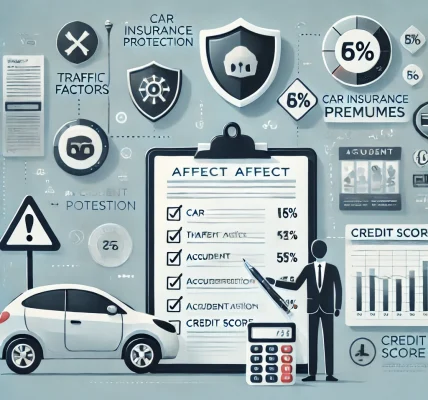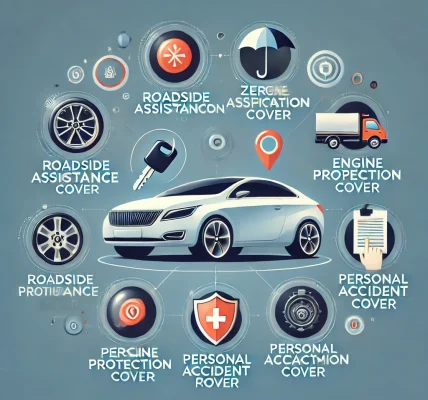Car insurance is a necessity, but that doesn’t mean you have to overpay for it. Many drivers unknowingly spend more than they need to on car insurance, often due to a lack of information or common misconceptions. Fortunately, there are several proven strategies to reduce your car insurance premiums without sacrificing essential coverage. This guide will walk you through practical, legally sound, and effective ways to lower your car insurance costs while ensuring you remain adequately protected.
1. Compare Multiple Insurance Providers
One of the simplest ways to save on car insurance is to compare quotes from multiple providers. Insurance companies use different criteria to determine rates, meaning you might find significant price variations for the same level of coverage. Use online comparison tools and get quotes from at least three to five reputable insurers before making a decision.
Tip: Look beyond the premium cost and check customer reviews, claim settlement ratios, and additional benefits each insurer offers.
2. Choose the Right Coverage for Your Needs
Having comprehensive coverage is essential, but you may be paying for add-ons you don’t actually need. Evaluate your policy and remove unnecessary coverage options.
- If you own an older vehicle, consider dropping collision and comprehensive coverage if the cost exceeds the vehicle’s actual value.
- Opt for only essential add-ons that suit your driving habits, such as roadside assistance or zero depreciation cover.
3. Increase Your Deductible
The deductible is the amount you pay out-of-pocket before your insurance kicks in. Increasing your deductible can significantly lower your premium. However, ensure that the deductible amount is something you can afford in case of an accident.
Example: If you raise your deductible from $500 to $1,000, you could see a reduction in your premium by 10-20%.
4. Maintain a Good Driving Record
Safe driving not only keeps you and others on the road safe but also helps in securing lower insurance rates. Most insurance companies reward drivers with a clean record by offering discounts.
- Avoid speeding tickets, DUIs, and at-fault accidents.
- Take defensive driving courses to qualify for additional discounts.
- Follow traffic laws and drive responsibly to maintain a good history.
5. Bundle Your Insurance Policies
If you have multiple insurance policies, such as home and auto insurance, bundling them with the same provider can result in significant discounts. Many insurers offer up to 20% savings when you combine policies.
Tip: While bundling can save money, ensure that both policies offer competitive pricing and the necessary coverage before committing.
6. Take Advantage of Discounts
Insurance companies offer various discounts that can help reduce your premium. Some common discounts include:
- Good Driver Discount – Available for drivers with a clean record.
- Low Mileage Discount – If you drive less than the average miles per year.
- Multi-Car Discount – For insuring multiple cars under the same policy.
- Anti-Theft Discount – If your car has security features like alarms or tracking systems.
- Loyalty Discounts – Offered to long-term policyholders.
Check with your insurer to see which discounts apply to you.
7. Improve Your Credit Score
Many insurance companies use credit scores to determine premium rates. A higher credit score often leads to lower premiums.
- Pay bills on time.
- Reduce outstanding debts.
- Regularly check your credit report for errors and dispute inaccuracies.
8. Opt for Usage-Based Insurance (UBI)
Usage-based insurance programs track your driving behavior through a mobile app or telematics device installed in your car. Safe drivers can earn substantial discounts based on real-time data collected by the insurer.
Example: If you drive less frequently and practice safe driving habits, you could save up to 30% on your premium.
9. Drive a Car That’s Cheaper to Insure
Car insurance premiums vary based on the make, model, and year of your vehicle. High-performance cars and luxury vehicles typically have higher insurance costs due to expensive repairs and higher risks.
Tip: When buying a new car, check insurance costs beforehand to ensure it aligns with your budget.
10. Maintain Continuous Coverage
A lapse in car insurance coverage, even for a short period, can result in higher premiums when you renew your policy. Always ensure you renew your policy on time and maintain continuous coverage.
11. Remove Unnecessary Drivers from Your Policy
If you have multiple drivers listed on your policy, removing high-risk drivers (such as teenagers or individuals with poor driving records) can reduce your premium. Ensure that only necessary drivers remain on the policy.
12. Relocate to a Low-Risk Area
Your location impacts your car insurance rates. If you move to an area with lower accident rates, crime rates, and less traffic congestion, you could see a reduction in your premium. While moving just for insurance savings is impractical, this is something to consider if you are planning a relocation.
13. Pay Your Premium Annually
Most insurers offer a discount if you pay your premium annually instead of monthly. This is because monthly payments often come with additional administrative fees.
Tip: If paying annually is difficult, consider setting up a savings plan to prepare for the payment in one lump sum.
14. Stay with a Reputable Insurer
Sometimes, the cheapest insurance policy isn’t the best. It’s crucial to choose an insurer with a good reputation, strong financial stability, and a proven track record of fair claim settlements. A reliable insurer can save you money and stress in the long run.
15. Review Your Policy Regularly
Car insurance needs change over time, and what worked for you last year may not be the best option today. Review your policy at least once a year and adjust coverage based on your current circumstances.
- If your car’s value has depreciated significantly, consider adjusting coverage.
- Check for new discounts or policy features that may apply to you.
- Compare insurance rates with other providers to ensure you’re still getting the best deal.
Conclusion
Lowering your car insurance premium doesn’t mean cutting corners on essential coverage. By following the strategies outlined in this guide—such as shopping around, maintaining a good driving record, leveraging discounts, and optimizing your policy—you can significantly reduce your insurance costs while staying fully protected.
Remember, responsible driving and regular policy reviews are key to keeping your insurance rates low over the long term. Implement these DIY steps today and start saving on your car insurance without compromising on the coverage you need!




